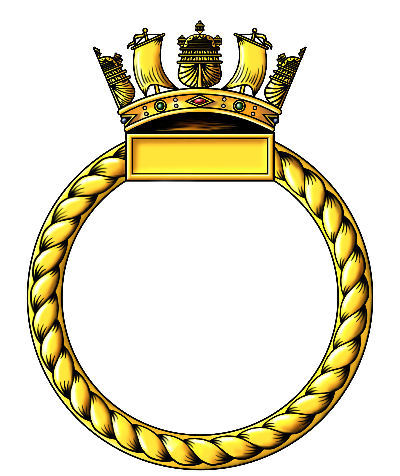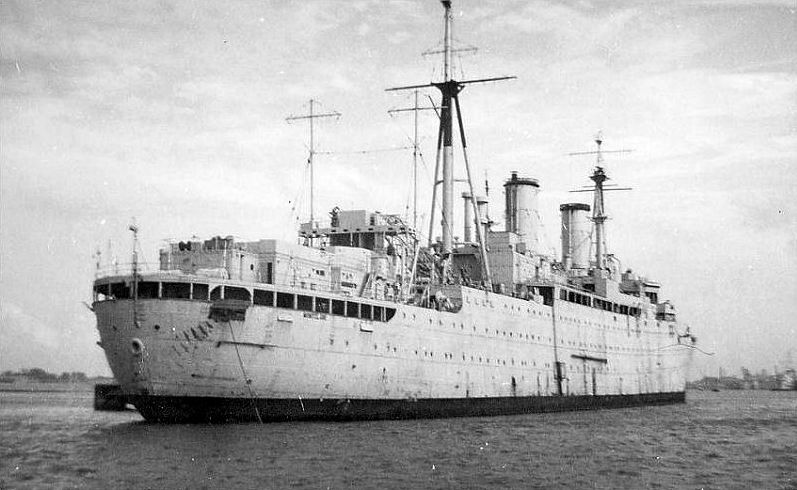Destroyer Depot Ship/Fleet Train Headquarters Ship

No badge issued for this vessel
Battle Honours
Atlantic 1939-41
Specifications
Builder: John Brown and Company, Clydebank, Dunbartonshire, Scotland.
Displacement: 16,314 tons
Length: 570 ft
Beam: 70 ft
Draught: 28 ft
Speed: 18 Knots
Crew complement: Not known
Commanding Officers
Captain. G. W. Hoare-Smith
Related items
None
Reminiscences
None
Gallery
None
H.M.S. MONTCLARE

Early history
Launched December 1921 for service with the Canadian Pacific Steamship Company the S.S. MONTCLARE made her maiden voyage, on 18 August 1922, operating, initially on the Liverpool-Québec-Montréal service, switching to the Antwerp and Hamburg services in 1929. From 1933 until being requisitioned for war service she operated various cruises and transatlantic services; her final commercial passenger voyage in July 1939, a Liverpool-Montréal roundtrip.
The S.S. MONTCLARE was taken over as an armed merchant cruiser in August 1939; she was purchased by the Admiralty in 1942 and converted into a destroyer depot ship H.M.S. MONTCLARE.
Allocated to the British Pacific Fleet
She joined the BPF in May 1945 when she arrived on station at Manus. MONTCLARE was unusual in that she was to have dual roles as Fleet Train Headquarters ship carrying the Flag of Rear Admiral Fleet Train (RAFT), Rear Admiral D. Fisher and as a Destroyer Depot Ship she carried the Flag of Rear Admiral Destroyers (RA(D)) Rear Admiral J.H. Edelsten. MONTCLARE relieved the existing Headquarters Ship, HMS Lothian upon her arrival on station at Manus. MONTCLARE relocated to Hong Kong harbour in October 1945. .
Post War
MONTCLARE resumed her role as Destroyer Depot Ship after the break up of the BPF before she was decommissioned in 1954. She was laid up at Gareloch and later at Portsmouth. She was scrapped in 1958.
Last modified: 23 February 2023
Primary information sources
Additional sources:
Comments (1)
My father Raymond Franklin served in the Montclare from late 1944 to early 1946 as a wireless telegraphist. I have several pictures of him and other crew particularly in Hong Kong December 1945. If you would like to see them or have a name I may be able to find your relatives picture or signature.